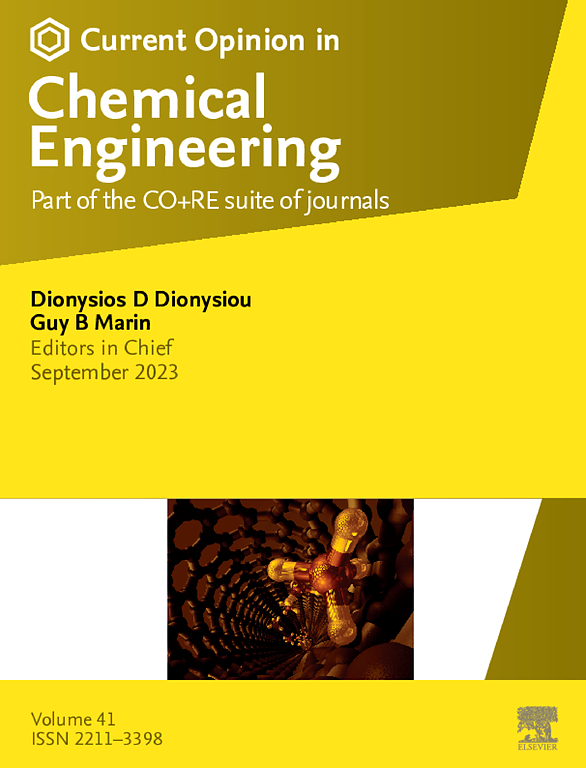薄膜复合膜螺旋缠绕元件的制造:现代方法和可持续制造途径
IF 6.8
2区 工程技术
Q1 BIOTECHNOLOGY & APPLIED MICROBIOLOGY
引用次数: 0
摘要
由平板聚酰胺薄膜复合材料(TFC)制成的螺旋缠绕膜元件已经成功地应用于工业水和废水处理过程中几十年了。这种膜配置,提供高包装密度和占地面积小,是纳滤和反渗透过程的标准设计。尽管具有工业优势,但螺旋缠绕膜元件的制造严重依赖于来自原油的材料。本文综述了利用各种方法开发可持续螺旋缠绕TFC膜元件的最新进展,包括绿色溶剂、来自可再生或可回收材料的聚合物/单体,以及消除有害溶剂的制造技术。虽然相关的实验室研究已经出现了有希望的结果,但值得注意的是,在这个主题上缺乏案例研究、专利或著名膜制造商的出版物。认识到可持续制造在减轻环境影响和优化资源效率方面的重要意义,我们预计在不久的将来将继续在这一主题上进行重点努力。本文章由计算机程序翻译,如有差异,请以英文原文为准。
Manufacturing spiral wound element of thin film composite membrane: contemporary methods and sustainable manufacturing approaches
Spiral wound membrane elements made from flat sheet polyamide thin film composite (TFC) membranes have been successfully used in industrial water and wastewater treatment processes for several decades. This membrane configuration, offering high packing density and a small footprint, is the standard design for nanofiltration and reverse osmosis processes. Despite its industrial advantages, the manufacturing of spiral wound membrane elements relies heavily on materials derived from crude oil. This review summarizes recent progress in developing sustainable spiral wound TFC membrane elements using various approaches, including green solvents, polymers/monomers sourced from renewable or recycled materials, and fabrication techniques that eliminate hazardous solvents. While promising results have emerged from relevant laboratory studies, there is a notable absence of case studies, patents, or publications from prominent membrane manufacturers on this topic. Recognizing the significance of sustainable manufacturing in mitigating environmental impacts and optimizing resource efficiency, we foresee continued and focused efforts on this subject in the near future.
求助全文
通过发布文献求助,成功后即可免费获取论文全文。
去求助
来源期刊

Current Opinion in Chemical Engineering
BIOTECHNOLOGY & APPLIED MICROBIOLOGYENGINE-ENGINEERING, CHEMICAL
CiteScore
12.80
自引率
3.00%
发文量
114
期刊介绍:
Current Opinion in Chemical Engineering is devoted to bringing forth short and focused review articles written by experts on current advances in different areas of chemical engineering. Only invited review articles will be published.
The goals of each review article in Current Opinion in Chemical Engineering are:
1. To acquaint the reader/researcher with the most important recent papers in the given topic.
2. To provide the reader with the views/opinions of the expert in each topic.
The reviews are short (about 2500 words or 5-10 printed pages with figures) and serve as an invaluable source of information for researchers, teachers, professionals and students. The reviews also aim to stimulate exchange of ideas among experts.
Themed sections:
Each review will focus on particular aspects of one of the following themed sections of chemical engineering:
1. Nanotechnology
2. Energy and environmental engineering
3. Biotechnology and bioprocess engineering
4. Biological engineering (covering tissue engineering, regenerative medicine, drug delivery)
5. Separation engineering (covering membrane technologies, adsorbents, desalination, distillation etc.)
6. Materials engineering (covering biomaterials, inorganic especially ceramic materials, nanostructured materials).
7. Process systems engineering
8. Reaction engineering and catalysis.
 求助内容:
求助内容: 应助结果提醒方式:
应助结果提醒方式:


